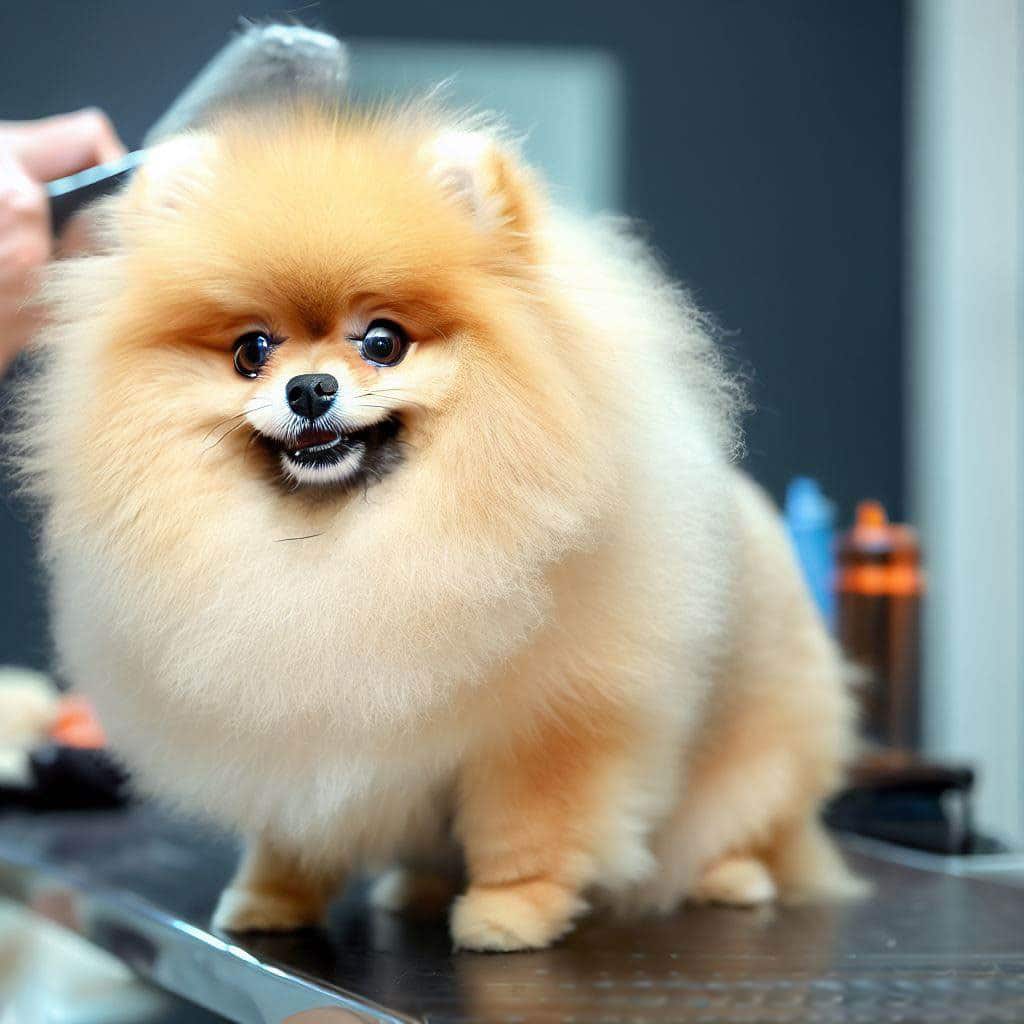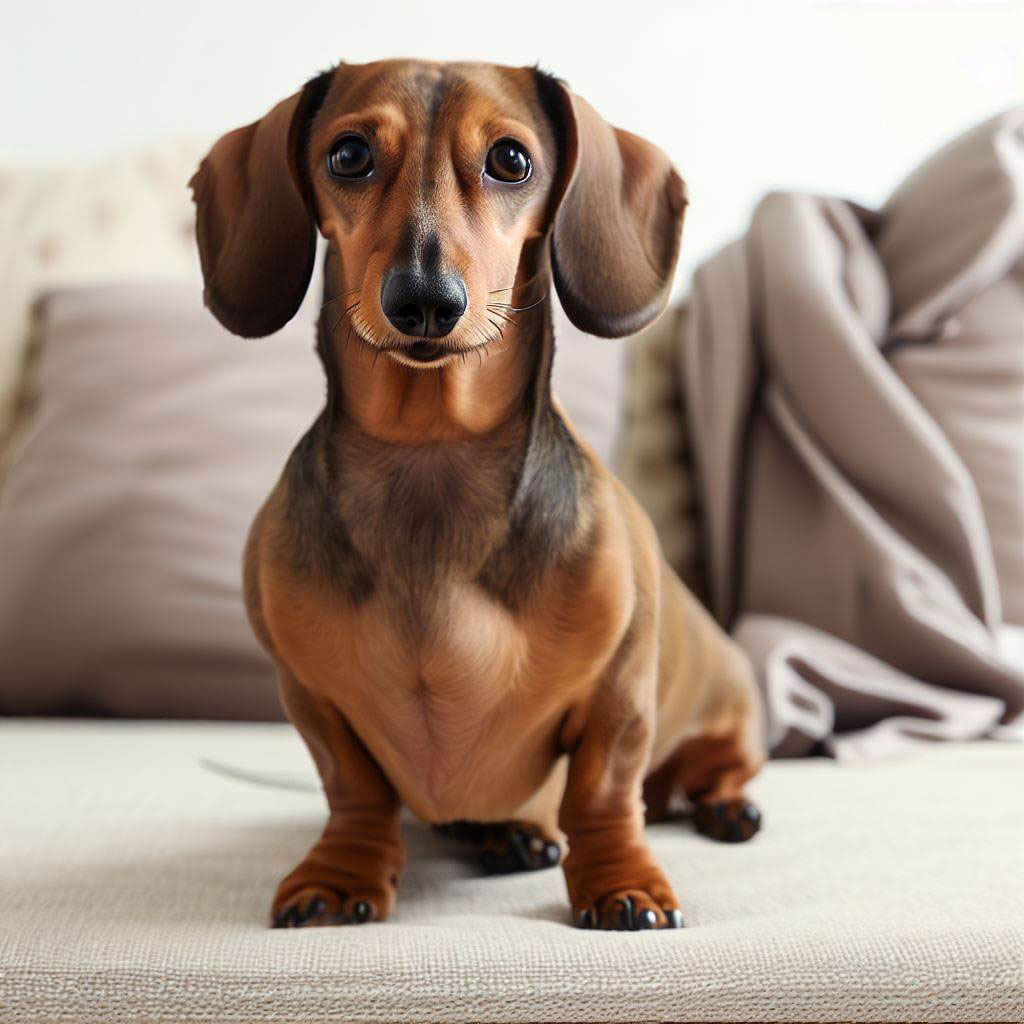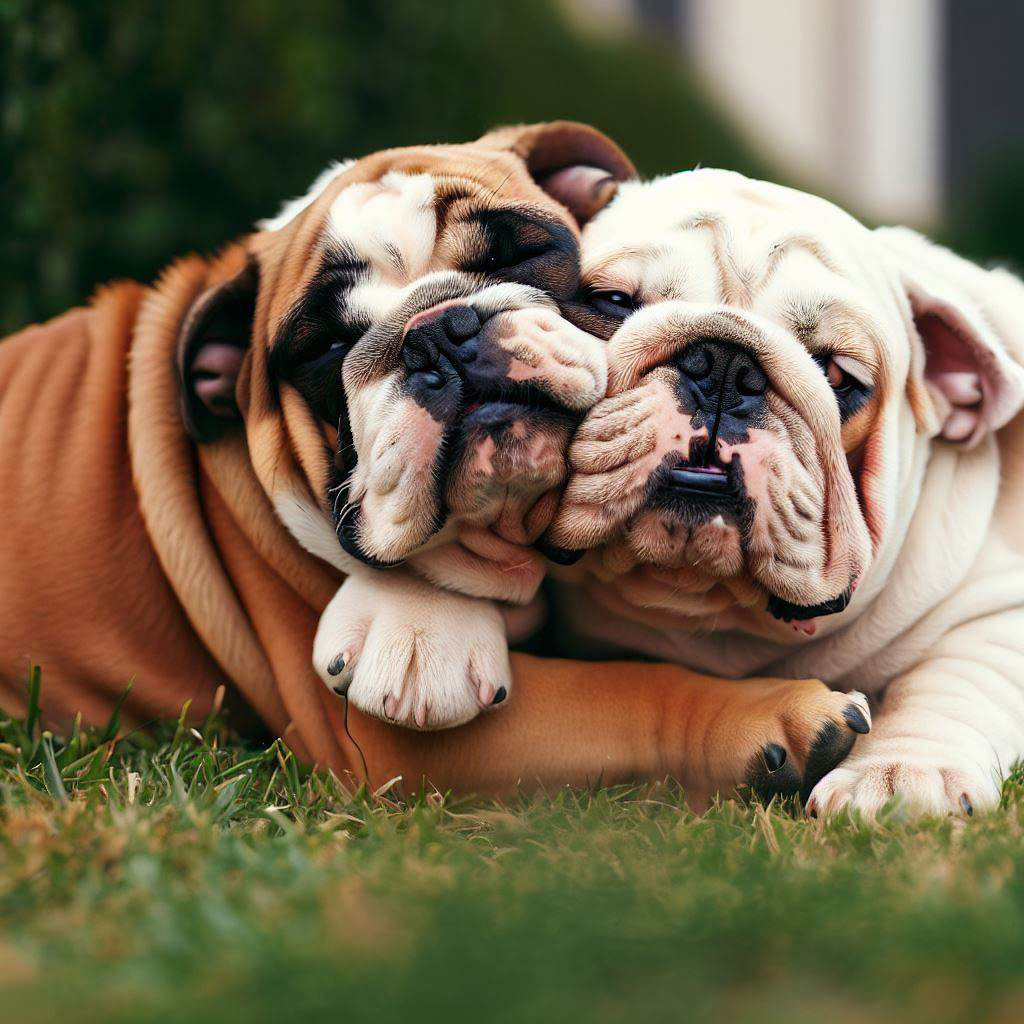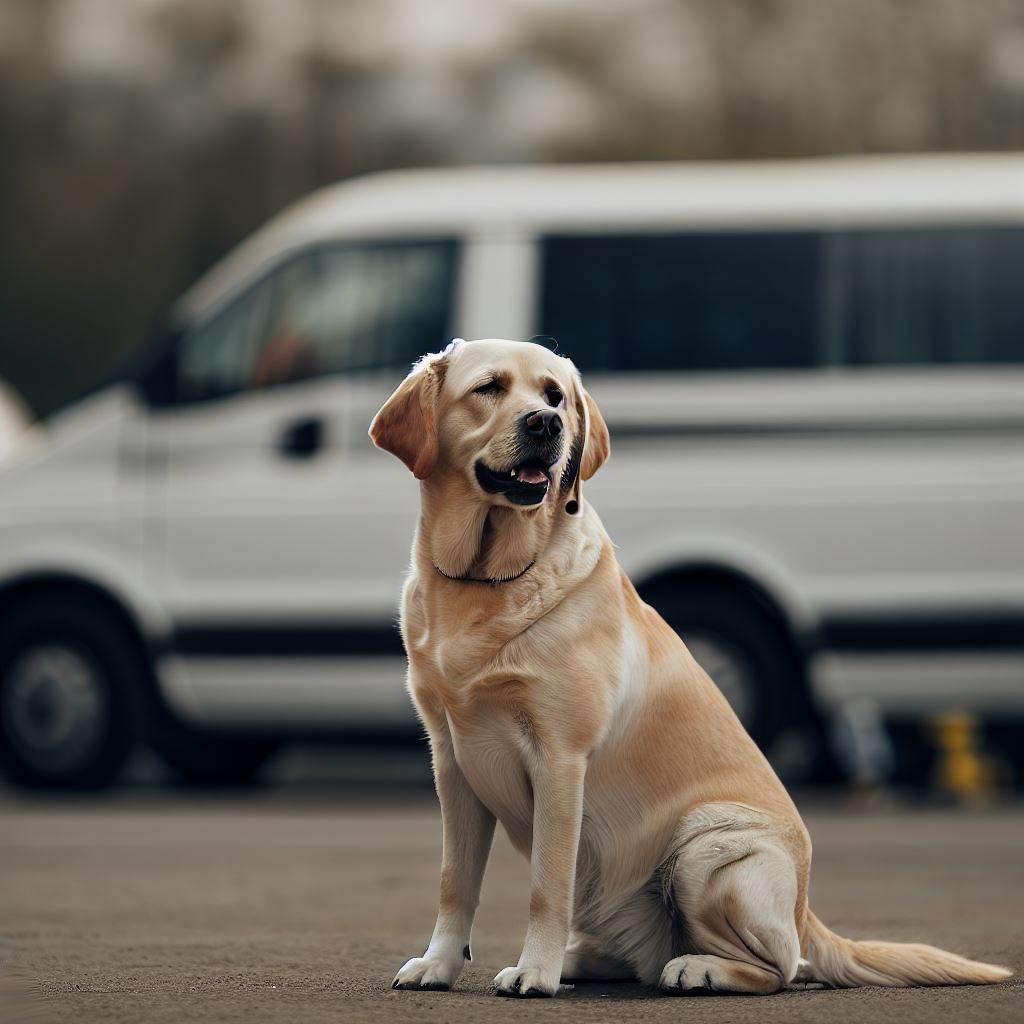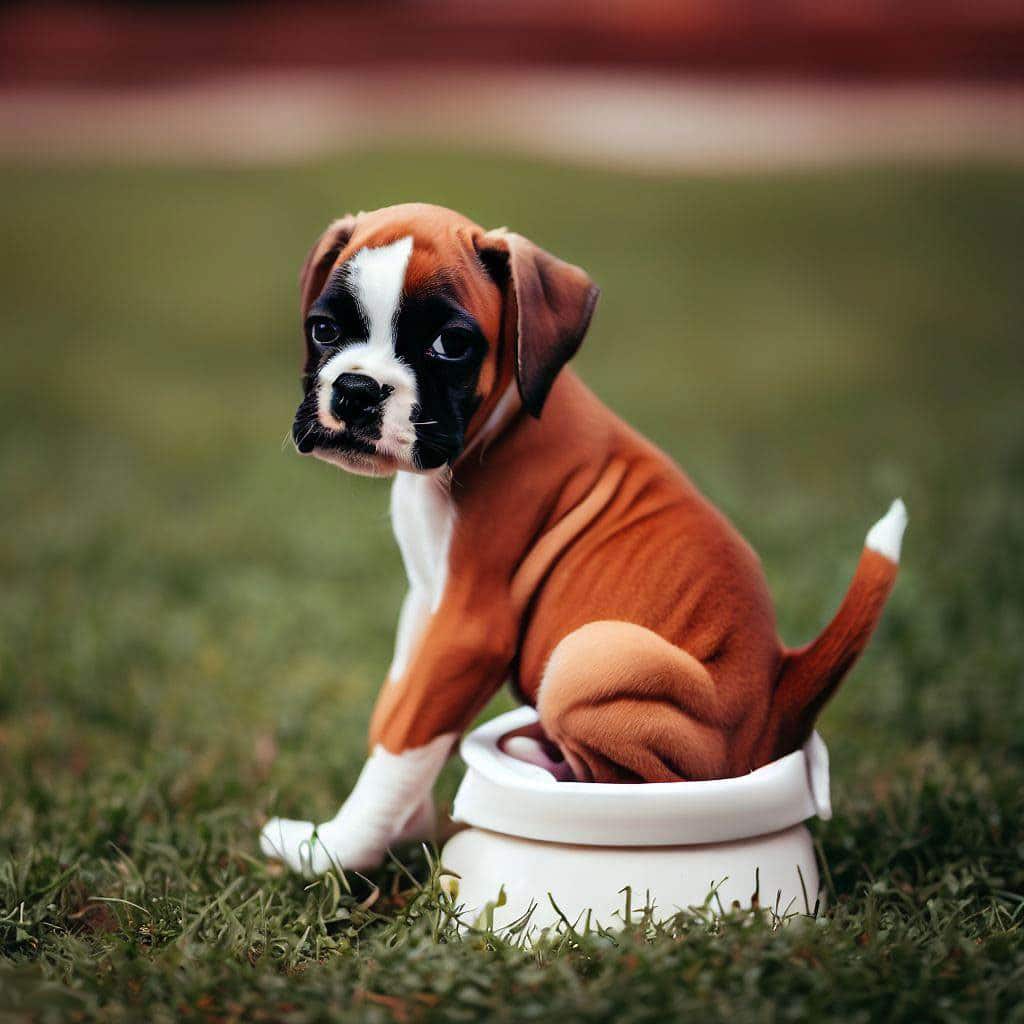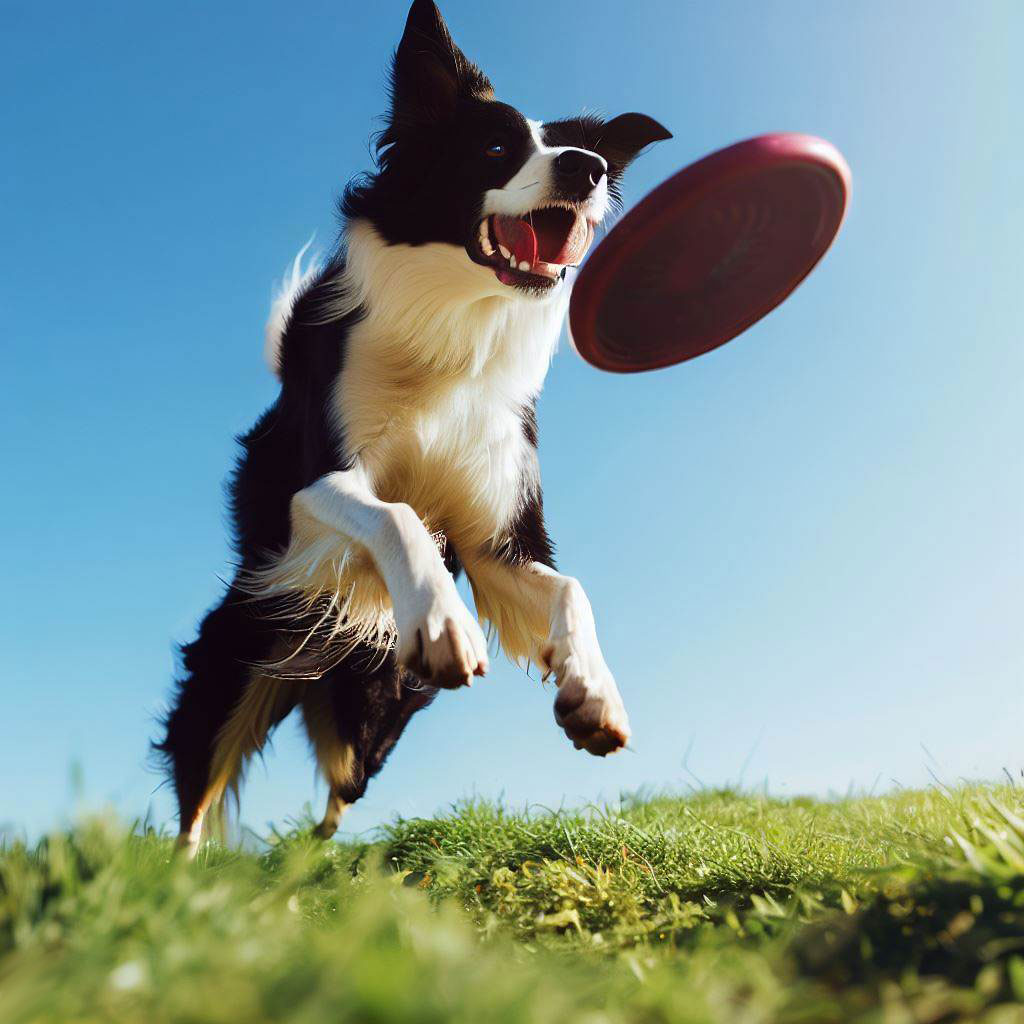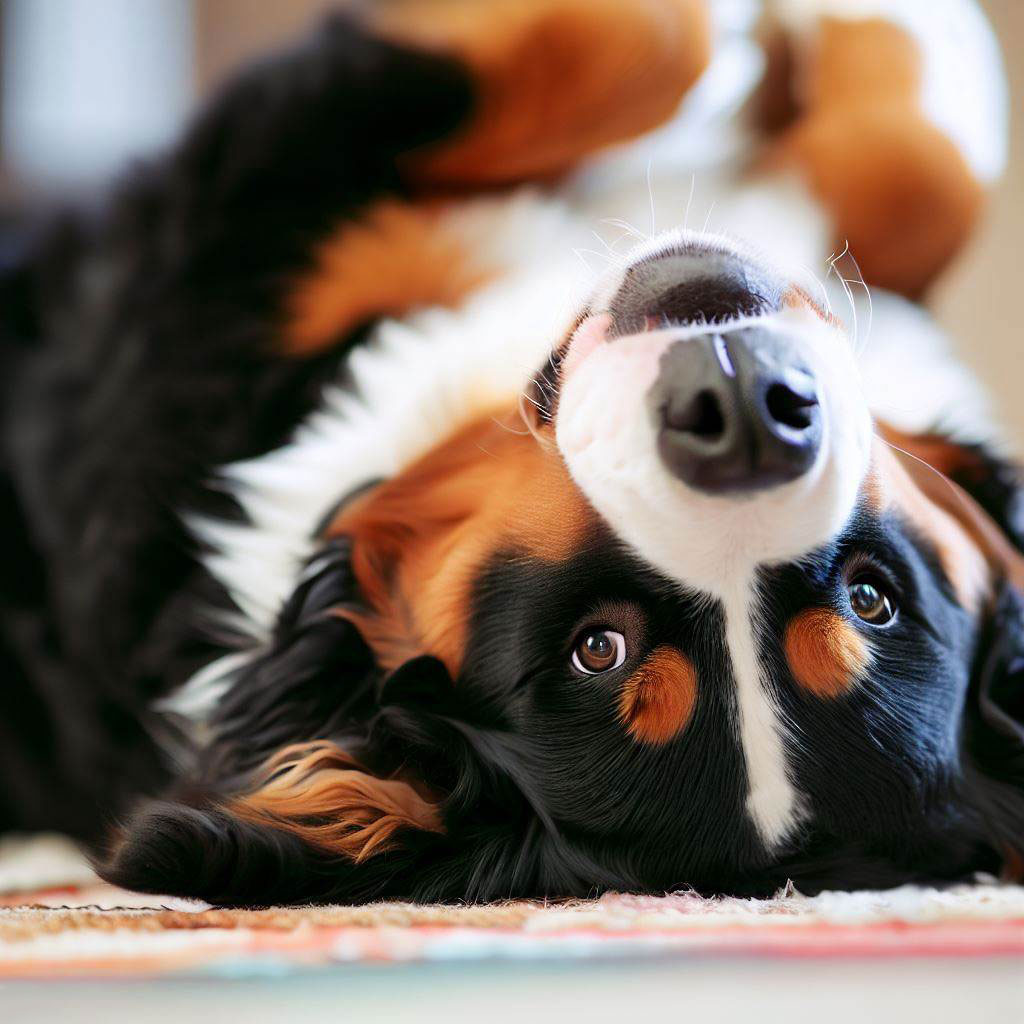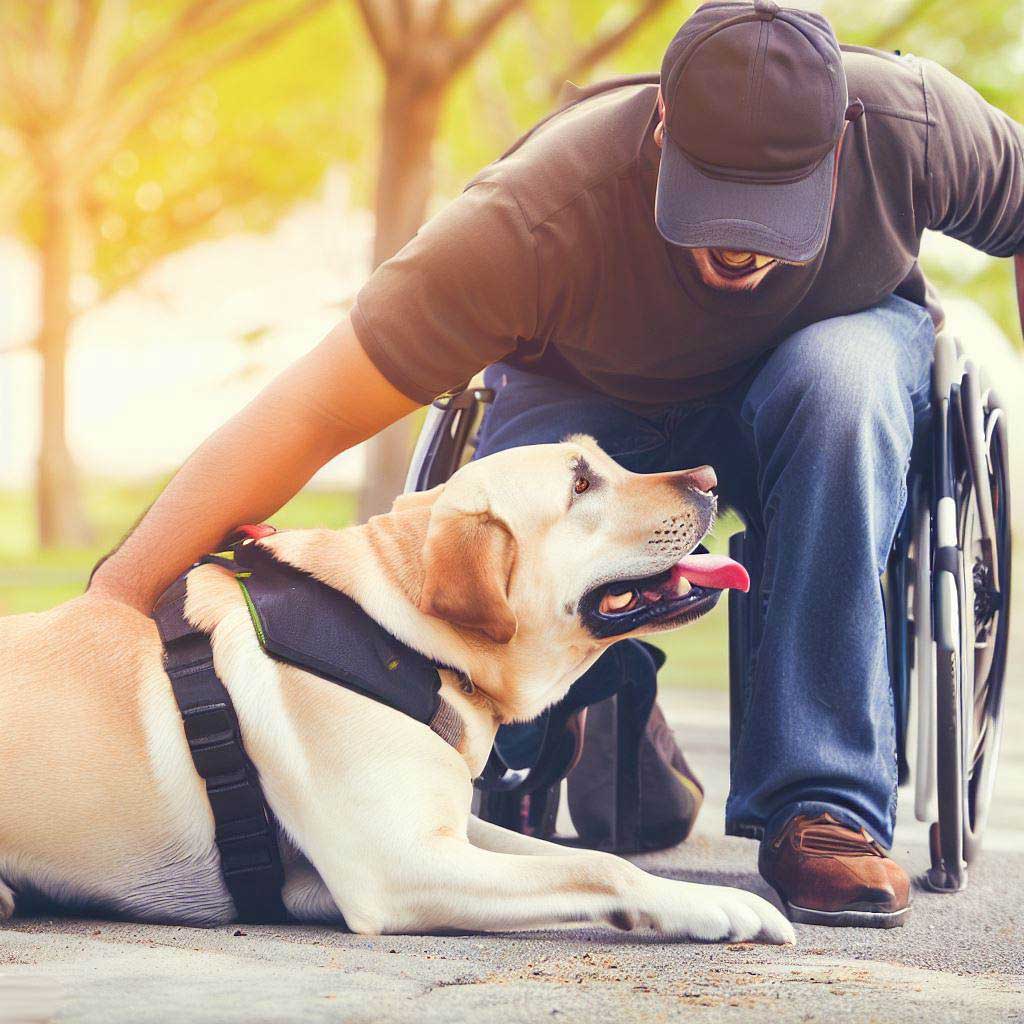What Are The Best Dog Grooming Tips?
Unlock Dog Grooming Tips: Essential Pet Dog Grooming Guide. Expert techniques and advice for a well-groomed, happy pet.
Table of Contents
The Importance of Regular Dog Grooming: An Expert’s Insight
As a dog grooming experts, we can unequivocally affirm that the practice of regular grooming is paramount for your canine companion’s overall health and well-being. Grooming goes far beyond mere aesthetics—it’s an integral part of your dog’s comprehensive care. If you’re in search of effective dog grooming tips, starting with the understanding of why regular grooming is crucial sets a solid foundation.
Physical Health Benefits of Dog Grooming
One of the core advantages of routine grooming is its significant contribution to your pet’s physical health. Regular brushing rids your dog’s coat of dead hair, dandruff and dirt, while distributing natural oils uniformly across their fur, thus fostering a vibrant and healthy look. This practice also stimulates blood circulation, which enhances skin health.
An often overlooked benefit of grooming is that it allows you to spot any abnormalities such as skin infections, fleas, ticks, or issues with their nails, teeth, ears, and eyes.
Early detection of these issues can ward off severe health complications and potentially hefty vet bills. With ticks specifically, it could save your beloved pooch from paralysis and even death.
Moreover, you can inspect your dog’s body for signs of illness, like unusual lumps, bumps, or inflammation during grooming. Changes in weight can also be noticed. Early detection and treatment of these conditions can greatly improve your pet’s health outlook.
Regular Grooming and Bonding
Beyond the physical health benefits, regular dog grooming plays a crucial role in strengthening the bond between you and your pet. Dogs are inherently social creatures, and consistent, positive interaction with their human caretakers contributes significantly to their emotional wellness.
Furthermore, grooming familiarizes your dog with being touched, a factor that can prove beneficial during vet visits. Dogs accustomed to grooming are generally more relaxed in situations requiring physical handling, courtesy of their familiarity with the sensation.
Dog Grooming Tips for Pet Owners
The dog grooming tips presented here underscore the critical role of a regular grooming routine. Besides keeping your dog healthy and comfortable, it fosters trust and deepens the bond you share with your furry friend.
Remember, a well-groomed dog is a clear reflection of responsible pet ownership and a testament to your commitment to keeping your pet healthy, tidy, and happy. After all, consistent grooming is one of the most tangible expressions of love and care you can offer your canine companion.

Understanding Your Dog’s Grooming Needs: An Expert’s Guide
Understanding your dog’s grooming needs is an essential part of responsible pet ownership. Each breed is unique, and grooming is no exception to this rule. From the thick coat of a Husky to the fine hair of a Chihuahua, the care requirements vary significantly.
We’re here to provide you with expert dog grooming tips to help you navigate the complex world of breed-specific grooming needs.
Variations in Grooming Needs by Breed
One of the key factors in a dog’s grooming needs is its breed. Different breeds have different types of coats, which require various grooming methods. For instance, long-haired breeds like Shih Tzus or Yorkshire Terriers demand regular brushing to prevent their hair from matting and tangling. On the other hand, short-haired breeds like Boxers or Beagles have a lower risk of matting, but they still require regular brushing to distribute their skin’s natural oils and remove loose hair.
Double-coated breeds, like Siberian Huskies or Golden Retrievers, go through periods of heavy shedding, often referred to as “blowing their coat”. These breeds benefit from regular, thorough brushing, especially during these shedding periods, to help manage the excessive hair loss. Brushing also stimulates their skin and keeps their coat healthy.
Dog breeds with wrinkles, like Bulldogs or Shar-Peis, require special attention to their skin folds to prevent infection. These areas should be cleaned regularly and kept dry to prevent bacteria or yeast build-up.
Recognizing Your Dog’s Unique Grooming Needs
While understanding the general grooming needs based on your dog’s breed is important, recognizing your dog’s unique grooming needs is just as crucial. Every dog is an individual, and even within the same breed, grooming needs can vary.
Skin sensitivity, allergies, activity levels, and overall health can all play a part in your dog’s specific grooming requirements. Dogs with skin sensitivities or allergies might require hypoallergenic shampoos or more frequent bathing. Passive and lazy dogs might need more frequent nail trims due to less natural wear on their nails. Aging dogs or dogs with health conditions might have special grooming needs to consider as well.
Dog Grooming Tips: Tailoring Your Approach
In essence, effective dog grooming is about tailoring your approach to your pet’s specific needs. You need to consider breed-specific factors but also pay attention to your dog’s individual characteristics and requirements. This blend of general and specific considerations is what makes expert dog grooming tips so valuable.
By understanding your dog’s unique grooming needs and variations in grooming by breed, you can ensure your pet is not only looking their best but is also in optimal health and comfort. Dog grooming is a multifaceted process, but with the right knowledge and approach, it can be a rewarding experience for both you and your canine companion.
Dog Grooming Tips: Tools
As a dog grooming experts, one of the most common questions we encounter is, “What tools do I need to groom my dog properly?”
Just as a carpenter needs the right set of tools to construct a building, the same applies to grooming your dog. A correct set of tools can make the process easier and more effective, and we’re here to provide you with practical dog grooming tips and insight into the essential tools required for this task.
Overview of Dog Grooming Tools
There is a wide variety of grooming tools available in the market, each designed for specific tasks and different types of coats. Some of the most essential ones include:
- Brushes and Combs: They come in various types, such as slicker brushes for removing tangles and loose hair, bristle brushes for short-haired breeds, and undercoat rakes for double-coated breeds.
- Dog Shampoo and Conditioner: Special dog-friendly formulas are essential to maintain the pH balance of your dog’s skin and coat.
- Nail Clippers or Grinders: Used for maintaining your dog’s nail length. Clippers cut the nails while grinders file them down.
- Ear Cleaner and Cotton Balls: These help to clean your dog’s ears safely.
- Dog Toothpaste and Toothbrush: Canine-specific dental products to maintain oral health.
- Grooming Shears and Clippers: They help to trim and maintain your dog’s fur, especially for breeds with long or thick coats.
Choosing the Right Tools for Your Dog
Choosing the right tools for your dog is critical and can greatly impact the grooming experience for both you and your pet. The breed and type of your dog’s coat will often determine which tools you need.
For instance, a short-haired breed may just require a simple bristle brush, while a long-haired breed might need a variety of tools such as slicker brushes, shears, and combs.
One of the most effective dog grooming tips is to understand your dog’s grooming needs and be aware of any sensitivities or health conditions they may have. For example, if your dog has sensitive skin, you might need to invest in a gentle brush and hypoallergenic shampoo.
Always remember to consider comfort and safety when choosing grooming tools.
We can’t stress enough, having the right set of tools is a crucial part of the grooming process. As each dog is unique, it’s important to tailor your selection based on their specific needs and characteristics. With the right tools and understanding, you’ll be well on your way to keeping your pet looking and feeling their best.
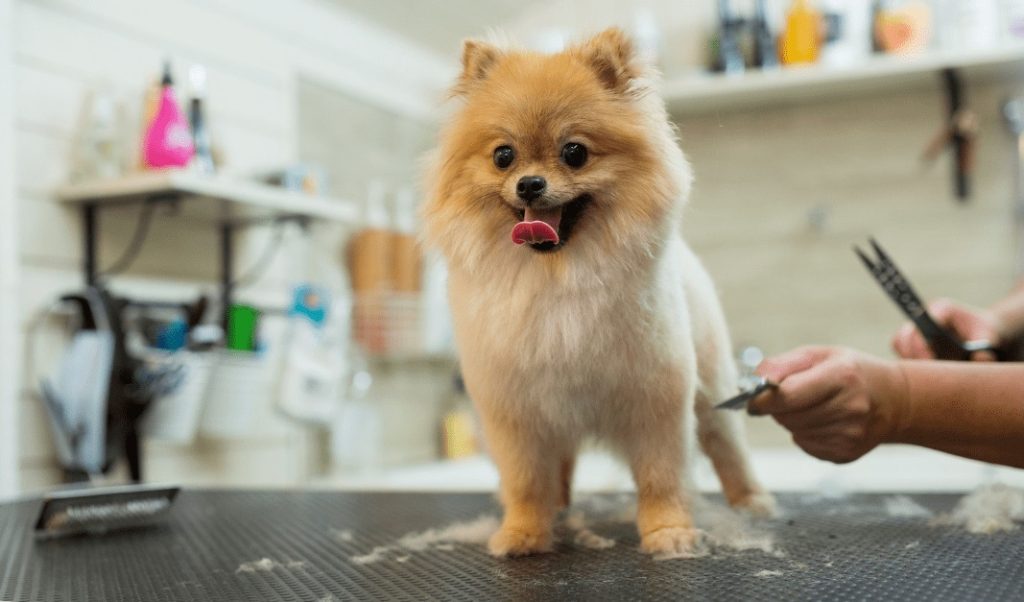
Dog Grooming Tips: Bathing Your Dog
Bathing your dog is a fundamental aspect of dog grooming, but it’s also one that many pet owners find daunting. From determining how often you should bathe your furry friend to the best practices to follow, it can feel like navigating an intricate maze. Alas, we can help to provide you with practical and effective dog grooming tips to help you master this essential grooming task.
Frequency of Bathing for Different Breeds
One of the most frequently asked questions in dog grooming is, “How often should I bathe my dog?” The answer varies depending on several factors, including your dog’s breed, coat type, lifestyle, and health needs.
Dogs with oily coats, such as Basset Hounds, may need to be bathed as frequently as once a week, while dogs with thick, double coats, like Huskies, may only need a bath a few times a year. Short-haired breeds like Beagles, who have less hair to trap dirt and odors, may only need monthly baths.
Your dog’s lifestyle also plays a significant role in determining bathing frequency. Active dogs who spend a lot of time outdoors may need to be bathed more frequently than their less active counterparts who snooze on your lounge all day long.
Remember, it’s essential to avoid over-bathing, as this can strip essential oils from your dog’s skin, leading to dryness and irritation. If you’re in doubt about how often to bathe your pet, have a chat to your veterinarian or professional groomer.
Best Practices for Bathing Your Dog
When it comes to bathing your dog, there are several best practices to keep in mind. One key dog grooming tip is to gather all your supplies before you begin. You’ll need a dog-specific shampoo that matches your dog’s skin type, a large towel, and perhaps a non-slip mat for your bathtub.
Ensure the water temperature is just right – lukewarm is typically best. Avoid getting water into your dog’s ears and eyes, as this can cause discomfort or even infections. Start from the neck and work your way down, lathering and massaging gently. Thoroughly rinse your dog to remove all shampoo, as any residue can cause skin irritation.
Dry your dog promptly after the bath. While some dogs can air dry, others with dense coats may need to be blow-dried on a low heat setting to prevent dampness that could lead to skin issues.
Bathing your dog can be a great bonding experience if done correctly. With these dog grooming tips in mind, not only will you keep your pet looking fresh and clean, but you’ll also contribute significantly to their overall health and happiness.
Dog Grooming Tips: Brushing Your Dog
Brushing your dog’s coat is more than just a way to keep them looking their best. It’s a crucial part of their overall health and well-being. Below are some essential dog grooming tips to help you understand the art of brushing your dog’s coat.
Finding the Right Brush for Your Dog’s Coat
The first step to effective brushing is selecting the right tool for your dog’s coat type. Each breed has a unique coat, and using the correct brush type will make the grooming experience more comfortable and productive for both of you.
For dogs with short, smooth coats like Chihuahuas or Bulldogs, a bristle brush is an excellent choice. It helps to remove loose hair and stimulates the skin, promoting a healthy, shiny coat.
Breeds with short, dense fur, such as Labradors or Rottweilers, may benefit from a rubber brush or grooming mitt to remove loose fur and distribute skin oils.
For dogs with long, silky coats like Yorkshire Terriers or Afghan Hounds, a slicker brush or comb is the best option to remove tangles and prevent matting.
Double-coated breeds, like Siberian Huskies or Golden Retrievers, require a bit more effort. An undercoat rake is essential for these breeds to remove the loose, dead undercoat, especially during shedding seasons.
How Often Should You Brush Your Dog?
The frequency of brushing depends on your dog’s breed and coat type. As a general rule, the longer your dog’s fur, the more often they should be brushed.
Short-haired dogs may only need brushing once a week to remove loose fur and distribute skin oils. However, breeds with longer hair will require more frequent brushing, sometimes daily, to prevent their hair from matting and tangling.
Double-coated breeds, especially during shedding seasons, may require daily brushing to manage the increased amount of loose fur.
The activity level of your dog also impacts brushing frequency. Active dogs who spend a lot of time outdoors may need more regular brushing to remove dirt and prevent tangles.
One of our key dog grooming tips is to make brushing a regular part of your routine. Not only does it keep your dog’s coat healthy and shiny, but it also provides an opportunity to bond with your pet, check for any skin issues, and help reduce the amount of fur in your home.
Brushing your dog is a fundamental aspect of dog grooming that can significantly enhance your pet’s health and appearance. With the right tools and schedule, you can make this task an enjoyable experience for both you and your furry friend.
Dog Grooming Tips: Nail Trimming
Nail trimming is an often overlooked yet critical aspect of dog grooming. Some owners find it intimidating due to the fear of causing discomfort or harm to their pets. However, understanding the importance of nail care and mastering safe trimming techniques can alleviate these concerns.
Understanding the Importance of Nail Care
The significance of maintaining your dog’s nail health goes beyond aesthetics. Overgrown nails can cause discomfort, pain, and even lead to issues with your dog’s gait and posture. Moreover, nails that are left too long can curl and grow into the paw pad, causing severe pain and potential infections.
Regular nail trims contribute to your dog’s overall comfort and mobility. Additionally, it can prevent damage to your floors and furniture, which can be scratched or torn by overly long nails.
Safe and Stress-Free Nail Trimming Techniques
Trimming your dog’s nails might seem daunting at first, but with a few dog grooming tips and the right approach, it can become a smooth and stress-free process.
Firstly, select an appropriate tool for your dog’s size and nail thickness. Guillotine-style clippers work well for smaller dogs, while a grinder or scissor-style clippers might be more suitable for larger breeds with thicker nails.
Before you start, examine your dog’s nail closely, especially if they have lighter nails. You’ll notice a pink area called the “quick”, which contains blood vessels and nerves. Cutting into the quick will cause pain and bleeding so examine them first very carefully before doing any cutting.
In dogs with dark nails, the quick is harder to see, so be conservative with your trims and take extra care.
Hold your dog’s paw firmly but gently and trim the nail below the quick on a 45-degree angle, taking off a small amount at a time. If your dog seems uncomfortable or pulls away, give them a break before trying again.
Incorporate lots of positive reinforcement into the process – treats, praises, and pets can help your dog associate nail trimming with positive experiences. If an accident occurs and you cut into the quick, don’t panic. Apply styptic powder or cornstarch to stop the bleeding and reassure your pet, aka give them a big cuddle.
Lastly, if you’re unsure or uncomfortable doing it yourself, don’t hesitate to seek professional help. Regular visits to a professional groomer or vet can ensure your dog’s nails are kept in great condition without the stress.
To sum it up, nail care is a vital part of dog grooming. With patience, practice, and these dog grooming tips, you’ll be well-equipped to keep your dog’s nails in tip-top shape, contributing to their overall health and well-being.

Dog Grooming Tips: Ear and Eye Care
When it comes to grooming, a comprehensive approach goes beyond merely caring for your dog’s coat and nails. Your dog’s eyes and ears need equal attention, as these sensitive areas can be prone to infections and other issues.
Recognizing Signs of Eye and Ear Problems
Early detection of potential health issues can make a significant difference in your pet’s comfort and wellbeing. For eye care, pay attention to signs such as redness, cloudiness, excessive tearing, or discharge. If your dog is squinting, pawing at their eye, or showing signs of sensitivity to light, these could indicate an issue that requires veterinary attention.
Similarly, for ear care, watch out for redness, swelling, or an unusual odor. If your dog is excessively shaking their head, scratching their ears, or appears to have trouble with balance, these may be signs of an ear infection or another underlying condition.
Remember, these signs warrant a visit to the vet. Early diagnosis and treatment can prevent more severe complications and discomfort for your pet.
Cleaning Your Dog’s Ears and Eyes Safely
Knowing how to clean your dog’s ears and eyes safely is a fundamental part of dog grooming.
When cleaning your dog’s ears, use a vet-recommended cleaner and avoid using cotton swabs, as they can push debris further into the ear or damage the ear canal. Instead, use a cotton ball or gauze wrapped around your finger. Gently wipe inside the ear flap and the accessible areas of the ear canal, being careful not to probe too deeply.
As for the eyes, clean them using a soft, damp cloth, or a sponge with warm water, gently wiping away any discharge. Do not use soap or shampoo near the eyes, and be sure to avoid direct contact with the eye itself. If your dog has tear stains, a vet-approved tear stain remover can be used. Tear stains are dark brown or reddish marks that appear beneath a dog’s eyes that are sometimes accompanied by discharge.
Never forget these dog grooming tips: always approach your pet calmly and gently during the process, rewarding them with praise and treats to make the experience positive. If your dog seems uncomfortable or resists, stop the process and consult with a vet or professional groomer.
In summary, maintaining your dog’s ear and eye health is an essential part of dog grooming. With a vigilant eye for potential issues and a gentle, patient hand for cleaning, you can help ensure your dog’s eyes and ears remain healthy and comfortable.
Dog Grooming Tips: Dental Care
When we think of dog grooming, it’s easy to focus on the fur, nails, ears, and eyes. However, oral hygiene plays an equally crucial role in your dog’s overall health and wellness. This section provides dog grooming tips to help you understand why dental hygiene matters and how to maintain your dog’s oral health effectively.
Why Dental Hygiene Matters for Dogs
Dental health is an often-underestimated aspect of dog care, but it’s vital for your pet’s overall wellbeing. Poor oral hygiene can lead to problems like gum disease, tooth decay, and bad breath. But it doesn’t stop there; these conditions can potentially lead to more serious health issues such as heart, kidney, and liver disease if harmful bacteria enter your dog’s bloodstream.
Routine dental care can prevent these issues and help your dog live a happier, healthier life. Moreover, a clean mouth means fresher breath, making those doggy kisses even more enjoyable!
Brushing Your Dog’s Teeth and Other Oral Care Tips
Brushing your dog’s teeth is the cornerstone of canine dental care. Ideally, you should aim to brush your dog’s teeth daily, but even a few times a week can make a significant difference.
Here are some dog grooming tips to make the process more manageable: Start slowly, allowing your pet to get used to the sensation. Use a dog-specific toothbrush and toothpaste; human toothpaste can upset your dog’s stomach. Focus on the outer surfaces of the teeth where plaque build-up is most common.
If your dog resists toothbrushing, alternatives can help maintain oral hygiene. Dental chews and special diets can help reduce plaque and tartar. Water additives, which you can add to your dog’s drinking water, can improve oral health and freshen breath. However, these should be used as an adjunct to brushing, not as a replacement.
Regular veterinary check-ups are also essential. Vets can perform professional cleanings and spot potential dental issues before they become significant problems.
Many don’t do it but dental care is a critical part of your dog’s grooming routine. By incorporating these dog grooming tips into your care routine, you can improve your dog’s oral health, prevent disease, and even prolong your furry friend’s life. So, don’t forget to pay attention to those pearly whites—it’s a step that’s well worth the effort.
Professional Dog Grooming: When to Seek Help
Although our comprehensive guide has provided a variety of dog grooming tips for home care, there are instances when seeking professional help can be beneficial, if not necessary. Understanding when to turn to a professional groomer is essential for your dog’s wellbeing.
Recognizing When Professional Grooming is Needed
Here are three examples of when professional dog grooming might be the most suitable course of action:
- Matting: Severe matting is not just a cosmetic issue. It can cause discomfort and lead to skin infections. Trying to handle matting at home can risk injuring your dog, particularly if the mats are close to the skin. A professional groomer has the right tools and skills to address this problem safely and efficiently.
- Nail Trimming Difficulties: If your dog finds nail trimming stressful or if you’re uncomfortable performing this task, a professional groomer can help. They’re trained to trim nails to the appropriate length without causing discomfort or injury.
- Breed-Specific Grooming Requirements: Certain breeds have specific grooming needs that can be complex to manage at home. For example, breeds like Poodles or Shih Tzus might need professional grooming to maintain their distinct coat styles.
Choosing a Professional Dog Groomer
Selecting a professional groomer involves more than just a quick internet search. Consider the groomer’s reputation, experience, and training. Ask for recommendations from friends, family, or your vet. Don’t hesitate to ask potential groomers about their credentials or their approach to handling dogs. A good groomer will be happy to answer your questions and might even offer a tour of their facilities.
Moreover, observe how your dog interacts with the groomer. The best groomer is not only skilled in the task at hand but also excellent at making your pet feel comfortable and safe.
Incorporating these dog grooming tips into your routine and recognizing when to seek professional help can ensure your pup remains happy, healthy, and looking their best. Remember, grooming isn’t just about maintaining your dog’s appearance; it’s an integral part of their overall health and wellbeing.
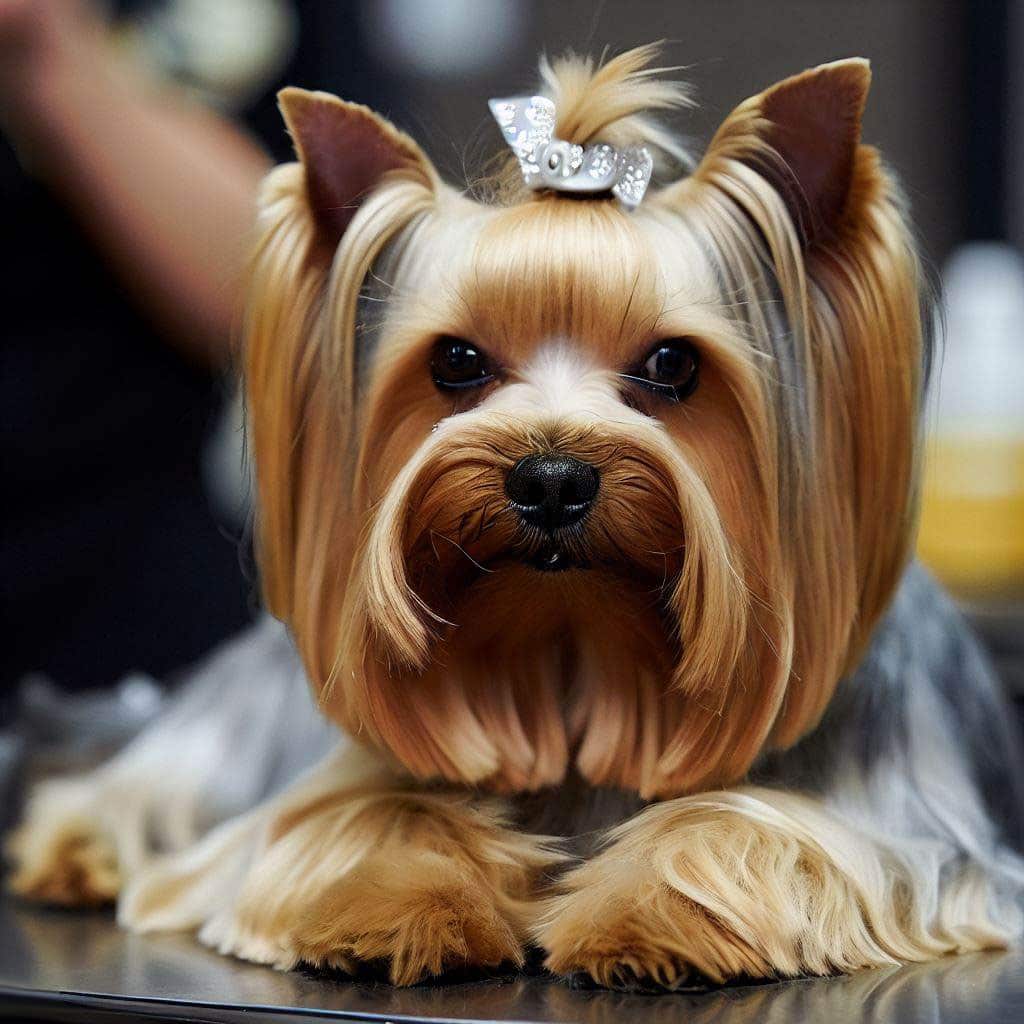
How to Make Dog Grooming a Positive Experience
Dog grooming is an essential part of pet care, but it can sometimes be stressful for your beloved pooch. With a bit of patience, understanding, and a whole lot of love, you can transform grooming into a positive, bonding experience for both you and your dog.
Here are some dog grooming tips on creating a stress-free routine and rewarding your dog during and after grooming.
Creating a Stress-Free Grooming Routine
Creating a calming environment is the first step to a stress-free grooming routine.
Start by choosing a quiet, comfortable space where your dog feels safe. Use gentle, reassuring tones while grooming, and keep the sessions short initially, gradually increasing the time as your pet grows more comfortable. Always remember that patience is key, especially in the beginning.
Introduce grooming tools slowly, allowing your dog to sniff and get accustomed to them. Combining these tools with positive associations (like treats or gentle praise) can help your dog view grooming as a fun activity rather than a chore.
Rewarding Your Dog During and After Grooming
Rewarding your dog throughout the grooming process reinforces positive behaviour. Treats, praise, or their favorite toy can all work as effective rewards.
Remember to offer rewards both during the grooming process for good behavior, and afterwards as a job well done.
By following these dog grooming tips, you’re not just ensuring a clean and healthy pet; you’re turning a necessity into a positive experience that can strengthen the bond between you and your dog. With consistency, patience, and plenty of rewards, grooming can become an enjoyable activity for your canine companion.
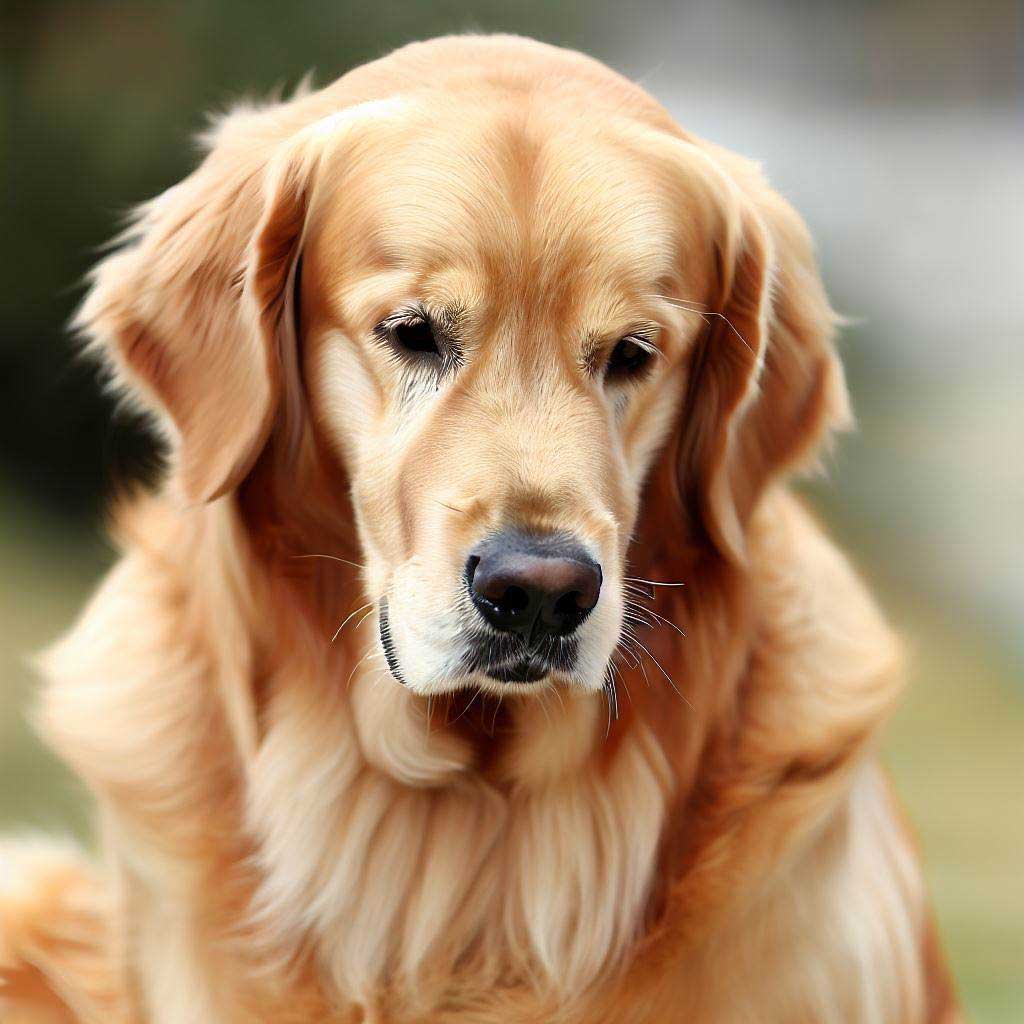
Conclusion: Building Your Dog Grooming Routine
We’ve explored numerous grooming tips, all aimed at ensuring the health, happiness, and well-being of your beloved pet.
We’ve delved into the importance of regular grooming, the needs based on breed variations, and how to select the right grooming tools. Also, we have provided guidance on bathing, brushing, nail trimming, ear and eye care, and dental hygiene. And for good measure we have also discussed when it’s beneficial to seek professional help. With the end-game to make grooming a positive experience for your pet.
Remember, grooming is not just about keeping your dog looking their best. It’s an integral aspect of their overall health. It helps to prevent skin problems, matting, dental issues, and can even serve as an early detection method for potential health concerns. Moreover, it’s a wonderful opportunity to deepen the bond you share with your dog, transforming what could be a chore into a joyful interaction.
The key takeaway
The key takeaway from our dog grooming tips is to develop a regular grooming routine. Like any new habit, it may take some time to establish, but the benefits are well worth it. Your dog’s coat will be shinier and healthier, they’ll feel more comfortable. Plus you’ll have the peace of mind knowing that you’re proactively contributing to their well-being.
Keep this guide bookmarked as a reference, as these dog grooming tips will serve as a roadmap to a happier, healthier dog. With patience, consistency, and love, you’ll find that grooming becomes less of a task and more of a bonding activity that you and your dog look forward to.
FAQ: Dog Grooming Tips
How often should I groom my dog?
The frequency of grooming depends largely on your dog’s breed, coat type, and lifestyle. As a general dog grooming tip, a quick daily brush is beneficial for all dogs. A more thorough grooming should be done every 4-6 weeks.
How often should I bathe my dog?
Similar to grooming, the bathing frequency varies based on the breed and your dog’s lifestyle. However, most dogs should be bathed once a month. Dogs with certain skin conditions may need more or less frequent baths, so always consult with your vet.
What are some dog grooming tips for a nervous dog?
For nervous dogs, create a calming environment. Introduce grooming tools slowly and reward your dog for staying calm. Gradually increase grooming time as your dog gets more comfortable.
Can I use human shampoo to bathe my dog?
No. Human shampoo can upset the pH balance of your dog’s skin, leading to dryness and irritation. Always use a shampoo specifically designed for dogs.
How often should I brush my dog’s teeth?
Ideally, you should brush your dog’s teeth daily. At the minimum, aim to brush them 2-3 times a week. Regular dental care is a crucial part of dog grooming tips.
How do I find the right brush for my dog’s coat?
Brushes depend on the type of your dog’s coat. Bristle brushes work well for all types, slicker brushes for removing mats and tangles. A rake however, is suitable for dogs with thick fur. Research or consult with a professional groomer about your breed’s specific needs.
My dog hates having his nails trimmed. What should I do?
Try making the process positive with treats and praise. If your dog still struggles, it might be worth seeking professional grooming help. Incorrect trimming can cause injury.
How do I clean my dog’s ears?
Use a vet-approved ear cleaning solution and cotton balls or pads. Avoid cotton swabs as they can damage the ear. If your dog’s ears smell bad or seem painful, consult your vet.
What are the signs that I need to seek professional grooming help?
Look out for severe matting, fear of nail trimming, or complex breed-specific grooming needs. A professional groomer can handle these tasks safely and efficiently.
What dog grooming tasks can I do at home?
Basic tasks like brushing, bathing, teeth cleaning, and regular nail trims can all be done at home. Use the right tools, have some patience and you’ll be just fine. Remember, these dog grooming tips are meant to make the process easier for both you and your dog.
How do you groom a dog for beginners?
Start with basic dog grooming tools such as a brush, comb, nail clippers, and dog shampoo. Firstly, brush your dog to remove loose hair and tangles, and then bathe with suitable dog shampoo. Patience and gentle handling are key for both you and your pet. There are many online dog grooming tips and videos on YouTube for beginners to guide you through the process, so check them out, they’re a great resource.
How do groomers groom unruly dogs?
Professional groomers use specialized techniques and tools to handle unruly dogs because they will create a calm environment and may use gentle restraints. Experience, patience, and understanding the dog’s behavior are essential in these cases, and the groomer may also work with the owner to understand the dog’s specific triggers and fears.
Is it better to bathe a dog before or after grooming?
It is generally better to bathe a dog before grooming because bathing helps to remove dirt and loose hair, making the grooming process smoother and more effective. Afterwards, using a conditioner after shampooing can also make brushing and trimming easier, contributing to a more polished look.
How do you groom a dog like a pro?
Grooming a dog like a pro requires practice, the right tools, and knowledge of the dog’s breed and coat type. Regular brushing, correct bathing techniques, precise nail trimming, and attention to areas like ears and teeth are all part of professional grooming. One good tip is taking a dog grooming course or seeking mentorship from a pro groomer which can also help.
Is there a dog grooming kit for deshedding?
Yes, deshedding kits are available specifically for removing loose and dead hair, because they typically include specialized brushes, combs, and possibly deshedding shampoos or conditioners. These tools are designed to reach the undercoat, effectively reducing shedding and promoting a healthy coat.
What is best to use for a dog grooming table?
A dog grooming table with an adjustable arm and non-slip surface is usually the best choice. The adjustable arm helps to secure the dog safely, while the non-slip surface provides stability. The key is the table should be sturdy and the right height for the groomer to prevent straining the body.
How to groom a dog without a grooming table?
Grooming a dog without a table is possible by using a stable and non-slip surface like a kitchen counter covered with a rubber mat. One tip is to secure your dog with a leash and using good body positioning which can really help in handling the dog. But remember to always prioritize safety for both you and your pet.
What are some dog bathing tips and tricks?
Try and use lukewarm water and a gentle dog shampoo thatis canine friendly. Firstly, wet the coat thoroughly before applying shampoo and make sure you avoid your pups face. Then use a shower attachment for even distribution of water, and massage the shampoo in the direction of hair growth. Finally, rinse well and dry with a towel or dog-specific hairdryer.
How to groom your dog at home with clippers?
Start by selecting the right clipper for your dog’s coat, then bathe and dry your dog fully, and finally brush thoroughly to remove any tangles. Then use the clippers with a guide comb, moving in the direction of hair growth but remember it’s wise to start with longer attachments to prevent cutting too short.
Is a dog groomer worth it?
Yes, a professional dog groomer is worth it for many pet owners because they have the expertise, tools, and facility to groom dogs efficiently and safely. They can handle challenging grooming tasks, provide breed-specific grooming, and often detect early signs of health problems.
Everything to know about dog grooming a terrier?
Some specific terrier breeds do require specific grooming techniques due to their unique coats. Regular brushing is advised to remove dead hair, also using specific trimming or hand-stripping techniques is advisable, and finally attention to areas like ears and nails are also crucial. Knowing the specific terrier breed and consulting breed-specific dog grooming tips can be very helpful which can be sourced from many pet dog clubs and online groups.
What are the essential dog grooming tools needed?
The main essential dog grooming tools include brushes and combs suitable for your dog’s coat, nail clippers, scissors or clippers for trimming hair, dog shampoo and conditioner, ear cleaner, a grooming table, and towels. But remember that some specific tools may vary based on your particular dog’s breed and coat type.
Is dog grooming essential for dog sports?
Yes, dog grooming is essential for dog sports to maintain hygiene, appearance, and performance. Regular grooming removes debris, allows for inspection of the skin and paws, and keeps the coat in optimal condition. Hence, proper grooming contributes to the dog’s comfort and mobility, enhancing performance in various dog sports.
What are some DIY healthy dog grooming tips?
For DIY healthy dog grooming, the important takeaways are regular brushing to prevent tangles, using natural dog-specific shampoos, and maintaining a routine are key. Attention to teeth, nails, ears, and eyes, and knowing your dog’s specific breed grooming needs is also essential. If you need help, simply seek guidance from other pet owners, professional dog grooming trainers or local dog clubs, especially for tasks like trimming or breed-specific care.
By addressing these frequently asked questions, you can ensure your dog stays clean, comfortable, and healthy. This will enhance the bond between you and your furry friend.
